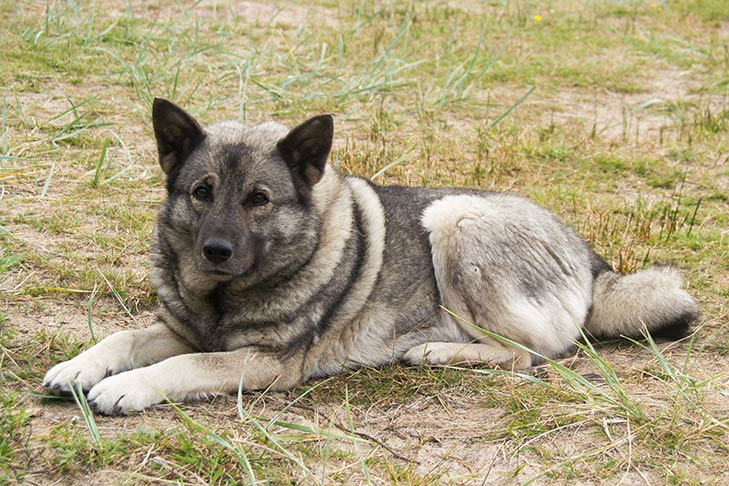The Norwegian Elkhound is a sturdy spitz breed distinguished by its thick silver-gray coat and regal yet amiable disposition. The sturdy Elkhound is one of Europe’s oldest breeds of canine. They traveled with the Vikings and are depicted in Norse mythology and art. Norwegian Elkhounds are sturdy, short-bodied dogs with shoulders that measure about 20 inches. Their tail tightly curls over their backs, and they have a thick coat of silver-gray hair. A dog built for an honest day’s work will have a deep chest, strong legs, and muscular thighs. The ears are movable and erect, and the eyes are a dark brown color. An Elkhound is a good example of a watchful, loyal dog of the north. Elkhounds are renowned for being excellent friends and sharp watchdogs. Their innate athleticism and eagerness are well-suited for agility and herding competitions. An Elkhound is a trustworthy companion forever, reserved until introductions are made. These powerful, self-assured canines with genuine tender hearts and a touch of hound-like independence.
Norwegian Elkhound
Average sizes and life
expectancy of the breed.
Height
20.5 inches (male)
19.5 inches (female)
Weight
55 pounds (male)
48 pounds (female)
Life Expectancy
12-15 years
Breed Traits & Characteristics
About the Breed

Owning a dog is not just a privilege; it’s a responsibility. They depend on us for, at minimum, food and shelter, and deserve much more. When you take a dog into your life, you need to understand the commitment that dog ownership entails.
 Health
Health
Recommended Health Tests From the National Breed Club:
- Hip Evaluation
- Ophthalmologist Evaluation
 Grooming
Grooming
 Exercise
Exercise
 Training
Training
 Nutrition
Nutrition
History
The Norwegian Elkhound has endured more than six millennia with all of his Nordic characteristics intact, a fearless and amiable dog who is devoted to humankind. He was a shipmate of the Vikings, keeper of remote farms, herder of flocks and defender from wolves and bears, and occasional hauler and hunter.
The Elkhound is significant in Norse myth and history. His skeleton was discovered in the Viste Cave at Jaeren, in western Norway, among the stone tools in a stratum dating from 4000 to 5000 b.c. He is mentioned in the epic sagas of ancient times, and we can see his remains next to his Viking master along with the Viking’s sword and shield, demonstrating the high regard in which he was held. One of the many frequently reported myths about the breed is that an Elkhound was crowned king in the country of Throndhjem in the 12th century.
The name Elkhound honors the breed’s long-standing prey, the enormous elk or moose. Elkhounds were experts at tracking these majestic and dangerous animals’ scent trails over great distances, holding them at bay while avoiding assault, and holding them off until the trailing hunters arrived. Elkhounds don’t resemble the sleek-coated, droopy-eared scenthounds that evolved in warmer climates, but they are nevertheless considered hounds since they trail and hold warm-blooded prey.





